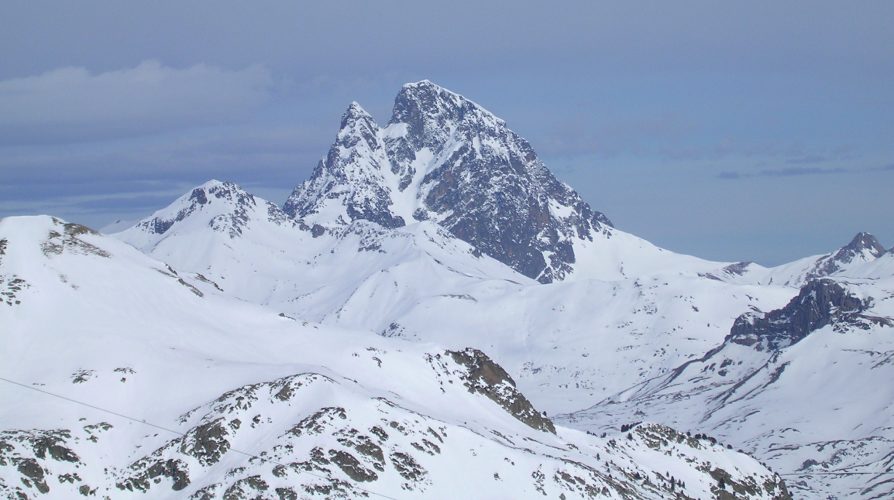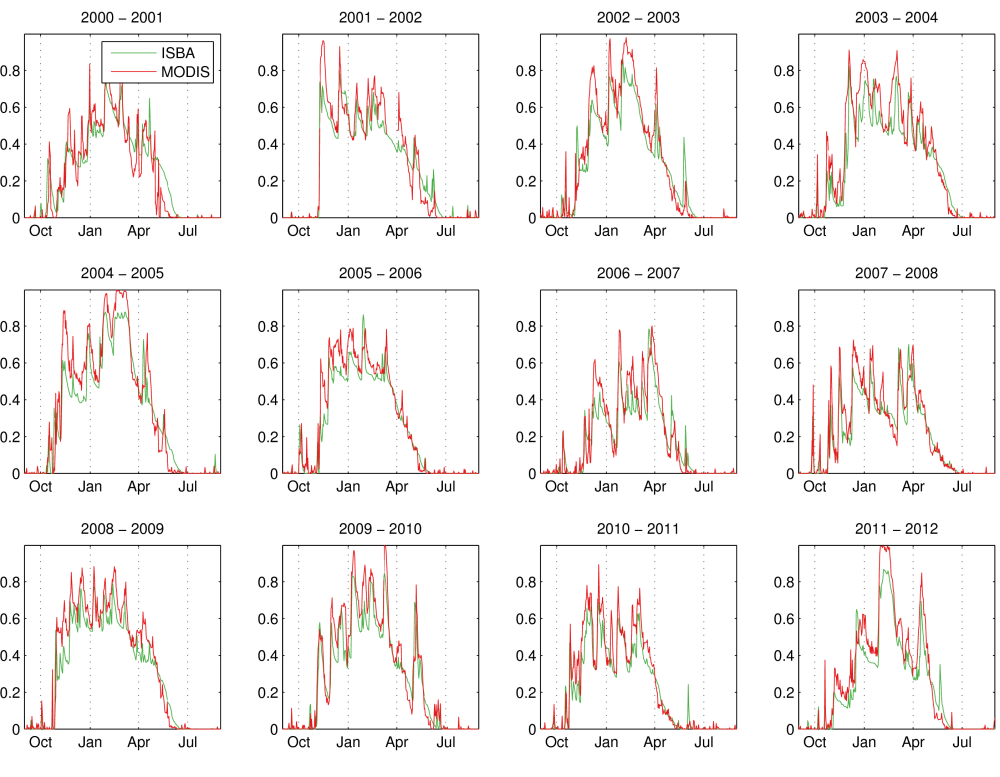
The Cesbio contributes to the Pyrenees Climate Change Observatory (OPCC) through the analysis of the snow cover evolution using satellite imagery. We are working on three remote sensing products in the framework of the CLIM’PY project:
- 1. Daily cloud-free maps of the snow cover area in the Pyrenees at 500 m resolution since 2000 from MODIS [1];
- 2. Maps of the snow cover area in the Pyrenees at 20 m and 30 m resolution since 2013 from Sentinel-2 and Landsat-8 [2];
- 3. Maps of the annual peak snow depth in the Bassiès-Vicdessos region at 4 m resolution since 2015 (i.e., one map per year) from Pléiades stereo imagery [3].
Although the observation of the snow cover by satellite began in the 1960’s, it is still difficult to use remote sensing data for climate change studies at the scale of the Pyrenees. The Landsat record dates back to 1980’s and can be used to map the snow cover area (see this example in the Canigou mountain), but the frequency of acquisition—about one clear-sky image per month—is too low with respect to the natural variability of the snow cover. On the other hand, MODIS allows mapping the snow cover area at the daily time step since 2000. The daily revisit is important to track the variations of the snow cover and also to make cloud-free composites like the time series of monthly snow cover maps shown below:

You can check the snow cover in near real time in our Pyrenees Snow Monitor!
Alas, 17 years of continuous observations are still insufficient in comparison to the standard of 30 years used in climatology. However, these data are useful to evaluate and improve numerical models of the snow cover. This figure below shows the comparison between the snow cover area determined from MODIS and simulated by SURFEX land surface model. Both datasets agree very well, which gives us confidence that the model is working well, at least under the climatic conditions of the recent years. Such models are key to anticipate the effect of climate change on the snow cover in the Pyrenees, because they can be forced by climate model outputs to make projections of the future snow cover conditions.

[1] Gascoin, S. O. Hagolle, M. Huc, L. Jarlan, J.F. Dejoux, C. Szczypta, R. Marti, and R. Sanchez (2015) A snow cover climatology for the Pyrenees from MODIS snow products, Hydrol. Earth Syst. Sci., 19, 2337-2351, doi:10.5194/hess-19-2337-2015.
[2] See the Theia snow product page.
[3] Marti, R., Gascoin, S., Berthier, E., de Pinel, M., Houet, T., and Laffly, D. (2016) Mapping snow depth in open alpine terrain from stereo satellite imagery, The Cryosphere, 10, 1361-1380, doi:10.5194/tc-10-1361-2016.
[4] Martin E., Gascoin S., Grusson Y., Murgue C., Bardeau M., Anctil F., Ferrant S., Lardy R., Le Moigne P., Leenhardt D., Rivalland V., Sánchez Pérez J.M., Sauvage S., Therond O. (2016) On the Use of Hydrological Models and Satellite Data to Study the Water Budget of River Basins Affected by Human Activities: Examples from the Garonne Basin of France. Surveys of Geophysics, 37(2), 223-247, doi:10.1007/s10712-016-9366-2


New! Track the snow cover evolution in near real time in this page: https://labo.obs-mip.fr/multitemp/pyrenees-snow-monitor/
Dear Simon Gascoin,
I’m really interested in this database for using it in climate change studies. I found it in Zenodo, but only from 2001 to 2015. Is there some website where to download this data updated to recent years?
Thank you very much!!
Pd: I’m open to collaborate!